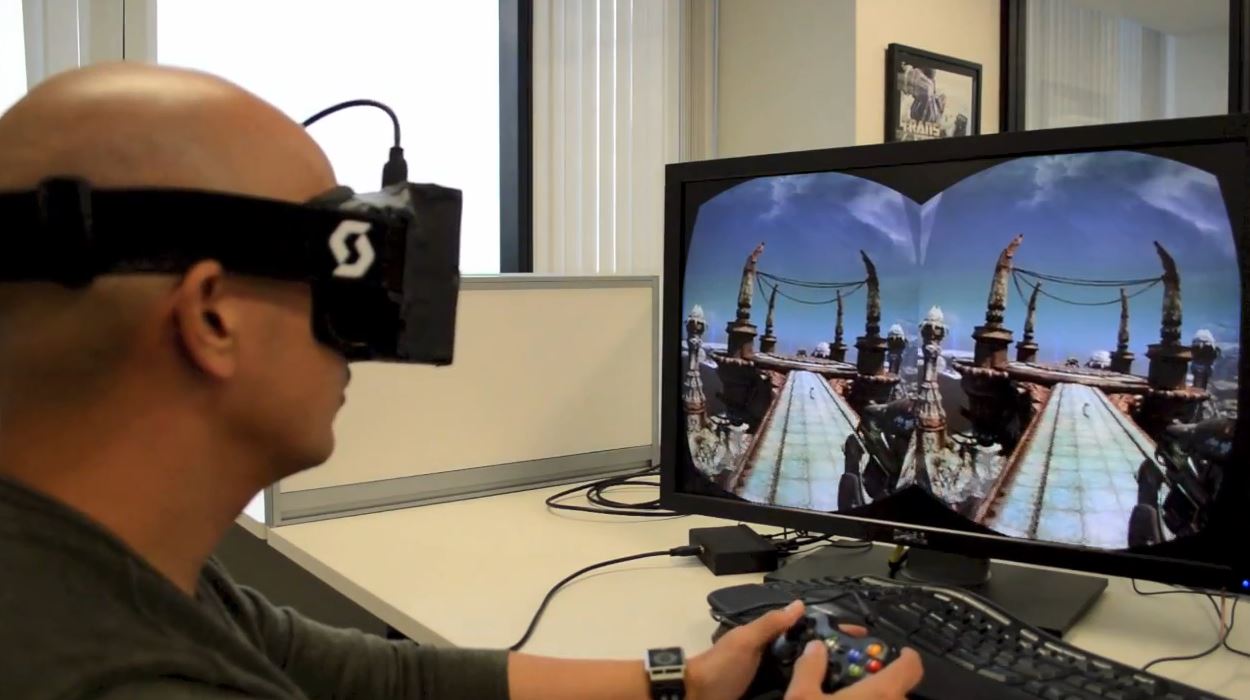

Despite predictions that VR would explode and dominate our lives, it never has. The truth is it’s never lived up to the hype. Why is that?
As the story goes, Facebook CEO Mark Zuckerberg famously bought the VR company Oculus in 2014 for $2 billion after simply trying on a prototype of the headset. At the time Zuckerberg declared, "Virtual reality was once the dream of science fiction … The future is coming."
It’s almost 4 years later, and Facebook is struggling to get customers to buy its Oculus VR headsets. As it turns out, the future still isn’t here and its arrival doesn’t seem imminent.
The shaky demand for the technology is causing some VR game and app developers to do some reflection. James Iliff is the co-founder at Survios, a VR gaming company. According to CNBC, Iliff says, "It's not happy sunshine and rainbows. We are very much in a trough of disillusionment."

The term "trough of disillusionment" comes from a theory called the Hype Cycle, which was popularized by the research firm Gartner. It charts the potential and sentiment around products as they're launched, innovated upon, and eventually embraced by customers. Its principles have practically become gospel in Silicon Valley.
The beginning stage of the Hype Cycle is called the Innovation Trigger. That’s basically when new technology is launched. The enthusiasm for the product grows and grows until it hits the Peak of Inflated Expectations. This is usually followed by a crash --- the so-called Trough of Disillusionment that Iliff mentions. Hopefully, the product breaks through that phase to enter the Slope of Enlightenment just before the masses adoption it.
Iliff, like many in the VR industry, believe expectations for VR were too high and predicted the current backlash. For that reason, he made sure his company was prepared for slow sales.
Survios made its hit shooter Raw Data widely available on multiple VR platforms including Oculus, PlayStation VR, and Vive. It also redesigned Raw Data to work in arcades.
These are the kinds of adjustments VR companies are making to survive.
More than 2,500 app and game makers came to San Jose last year to attend Oculus Connect, Facebook’s annual developer conference. This event focused on the potential of VR, and featured discussions on how VR will be used in healthcare, movies, and video games in the future. For instance, one panel explored how the disability community will be able to take advantage of VR gear.
The talks emphasized the promise of VR. It was as if Facebook was asking everyone to hang in there long enough for the fruits of their labor to ripen. Sure, the high-end headsets are massive and awkward, and need long, thick cables to connect to huge PCs. Of course, VR is pricey with headsets like the Oculus Rift costing upwards of $499. But if you just hold on a little longer consumers will come ... eventually.

Also last year VRDC, another developer conference, was held. It featured panels with titles like: "How to Be a Successful VR Game Studio." This event positions itself as a solution for VR app and gaming companies struggling to stay above water in the meantime.
Both these summits expose the anxiety manufacturers have over this still nascent technology. As the industry grapples with its future it’s also trying desperately to tread in place until sales are better.
But forecasts don’t look good, at least not in the short term. A few sources close to Oculus say that less than a 250,000 Rift headsets were sold during their first year on the market. At one point Facebook was forced to pull its Rift demo stations from hundreds of Best Buy stores around the country.
The cost of the headsets were cut, too – twice. At one point they were reduced to $400, a third less than its original price.
Other companies slashed prices, too. The PlayStation VR dropped from $500 to $400, and the Vive dropped from $799 to $599.
The more exciting developments are happening in the Augmented Reality (AR) world. Both Google and Apple have announced new AR technology. Apple calls its system ARKit, and it’s designed to support iPhones and iPads. Google’s ARCore works with devices powered by Android software.
Apps that marrying computer-generated images with the real world have enjoyed a lot of success. An example is the recent Pokemon Go craze. Another bright spots include Star Guide AR, which highlights constellations and stars in the sky once you point your phone at them. Ikea Place previews furniture in your house or apartment. While walking while looking through the screen on your phone.
Some app developers say they're energized about augmented reality, and think it may eventually help get customers excited about VR. The hope is that the AR trend will get people comfortable with more immersive phone technology like VR smartphone viewers.
CNBC spoke with Scott Montgomerie, the head of Scope AR, which makes training simulators. He says, "We're finally at the point where I think the technology has caught up to make good user experiences.”
The potential of AR and VR is why Microsoft is focusing on both. The company is partnering with device makers like HP, Dell, Acer, Samsung, and Lenovo to make headsets based on its designs. They'll be priced as low as $300 each when they arrive in stores.
VR technology hasn’t attracted the number of consumers that many predicted it would. However, within the next decade it’s a safe bet that its popularity will increase.
As Mark Zuckerberg observed, virtual reality was once the dream of science fiction. Well, it's already a science reality, and, eventually, it will be a commerical boom. Just not yet.

